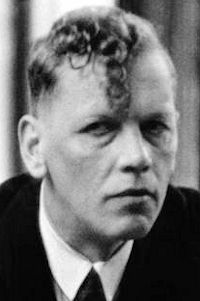Siegfried

| Hans Knappertsbusch | |||||
| Orchester der Bayreuther Festspiele | ||||||
Date/Location
Recording Type
|
| Siegfried | Wolfgang Windgassen |
| Mime | Paul Kuën |
| Wotan | Hans Hotter |
| Alberich | Gustav Neidlinger | Fafner | Arnold van Mill |
| Erda | Jean Madeira |
| Brünnhilde | Astrid Varnay |
| Waldvogel | Ilse Hollweg |
We embark here upon the third evening of Knappertsbusch’s 1956 Bayreuth Ring in Pristine’s splendid sonic refurbishment into Ambient Stereo – which is once again blighted by some fearsome coughing right from even before the brooding Prelude begins and continues throughout. The listener will also note how laboured is the conductor’s beat as Mime attempts fruitlessly to re-forge Nothung – but that is not necessarily a flaw if one considers that it reflects the inadequacy of the dwarf’s efforts; the coughing is less excusable. Nor is Windgassen’s entrance as Siegfried that impressive – his rhythmic slips constituted a weakness in Die Walküre – but let’s go easy on any tenor who can sing Siegmund then Siegried over four days without a break and he soon warms up – nor does he run ahead of Kna’s beat anywhere near as much here. Both he and Paul Kuen are excellent vocal actors and their exchanges make their mark, and even if Windgassen’s reedy tenor is never exactly that of the brawny, brainless hero, he is here in better voice than he was to be for Solti’s later studio recordings. Kuen is perfect as Mime, less mannered than Stolze and always distinguishable from Windgassen.
Hotter is immense as the Wanderer – the sheer amplitude of his entrance with “Heil dir, weiser Schmied!” really makes an impact, despite the slight rockiness of his vibrato and huskiness of tone; he really sounds as if he comes from another world. Some folk, I know, claim that there is too much talk and too many longueurs in Act I, but I really enjoy the riddling exchange between the Wanderer and Mime when it is done as well as it is here and Knappertsbusch gives the bass line real heft; meanwhile, the audience shows its appreciation via a salvo of tubercular coughing whenever a suitably hushed passage occurs – one cougher valiantly punctuates almost every bar with a loud bark. I long for the singers to do a Jon Vickers and shout, “Shut up with your damn coughing!”
The ”Fafner music” at the start of Scene 3, punctuated by Mime’s panicky interjections is wonderfully atmospheric and again, if Siegfried’s entrance isn’t as powerful as it should be, musically Kna is properly in charge and the pacing is perfect. The build-up to Siegfried’s forging song is riveting – such powerful orchestral playing – the introduction of the Magic Fire Music at 2:30 track 17 is magical, then Windgassen makes a good job of “Nothung! Nothung!”.
The Prelude to Act II is set in a chronic TB ward and the playing is almost as striking as the coughing. Neidlinger as Alberich is bitter malevolence incarnate; hard, black, biting and penetrative of tone. Van Mill sings through a megaphone to amplify his bass to dragon-sized proportions and it results in his sounding oddly like Boris Christoff. The coughing abates somewhat during the conjuring of Fafner and the battle comes over well, and Ilse Hollweg is a pretty, trilling Woodbird. Kuen is again a vivid, amusing Mime, enhancing the black humour of his attempted poisoning of Siegfried and Windgassen manages to sound really quite determinedly heroic as he sets off to find Brünnhilde following the Woodbird’s guidance, his progress encouraged by Kna’s swirling, energised conducting.
On to Act III. Wotan’s summoning of Erda is thrilling – just the kind of music Kna does best and Hotter and Jean Madeira are both magisterial; her plunges into her lower register are spine-chilling – what a voice – and what a wonderful, radiant passage of orchestral playing after Siegfried’s smashes Wotan’s spear, penetrates the ring of Magic Fire, reprising the music which concludes Die Walküre and reaches the broad, sunlit outcrop where Brünnhilde lies asleep. For some reason, the sound takes on a more resonant, boomy quality from then on, which is not unpleasant – but different in perspective. Windgassen’s cries of “Erwache!” are heart-rendingly powerful and Varnay’s rejoinder of “Heil dir, Sonne!” stunning. The final duet, including a laser-like top B, then two concluding top Cs from her – the last powerful, if a little sharp – puts the cap on a great night’s singing – and to his credit , Windgassen remains audible, whereas he is overpowered by Nilsson in the Solti studio recording.
Ralph Moore | APRIL 25, 2024

| GM, M&A, Orfeo, Andromeda, Pristine |
A production by Wieland Wagner (1951)
This recording is part of a complete Ring cycle.


